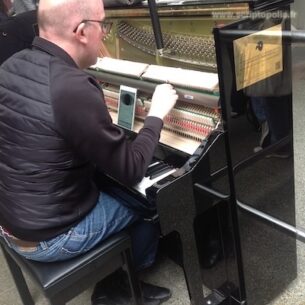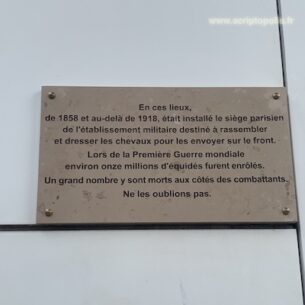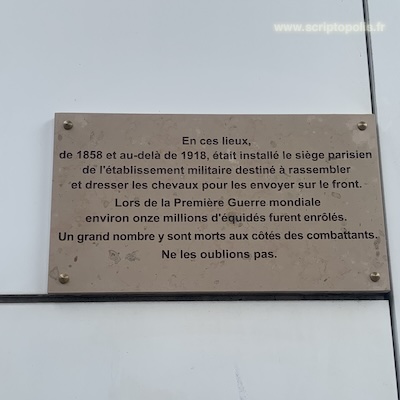Interdependence
The plaque has been affixed to the wall of the Institut Mutualiste Montsouris on Boulevard Jourdan, in the south of the 14th arrondissement of Paris. It is part of a series of initiatives to commemorate the massive contribution of animals to the war effort during the First World War. Launched in parallel with the Armistice commemorations, it aims to keep alive the memory of the 11 million equines, 100,000 dogs and 200,000 carrier pigeons that shared the soldiers’ destiny for over four years. These non-human combatants, enlisted to carry, pull, watch, rescue or inform, experienced the stress of separations, the agonies of transport, learning the violence of combat, the exploitation of physical strength, military relations of authority, deprivation, muddy life, hunger and fear, while at the same time developing new attachments in the trenches.
Looking at this plaque from afar, we might be tempted to see it as a “sign of the times”, materializing our greater sensitivity to living entities. However, as historian Éric Baratay has shown, it’s quite the opposite. The demand to extend the duty of remembrance to animals was born out of the experience of conflict, in a society in which humans and animals cohabited more closely than they do today, having become “companions” or “food products”. Indeed, fighting animals were already present on photographs, in military administration counts, in correspondence and in war memoirs. It was only afterwards, when horses stopped pulling carriages and working in the mines, when cows were no longer milked by hand, when livestock farming intensified and meat consumption became commonplace, that we forgot the obvious meaning of “general mobilization”. So, yes, today we need to engrave it on our walls and shoot American blockbusters to bring back to the consciousness of our contemporaries the strength of our interdependence with animals.







